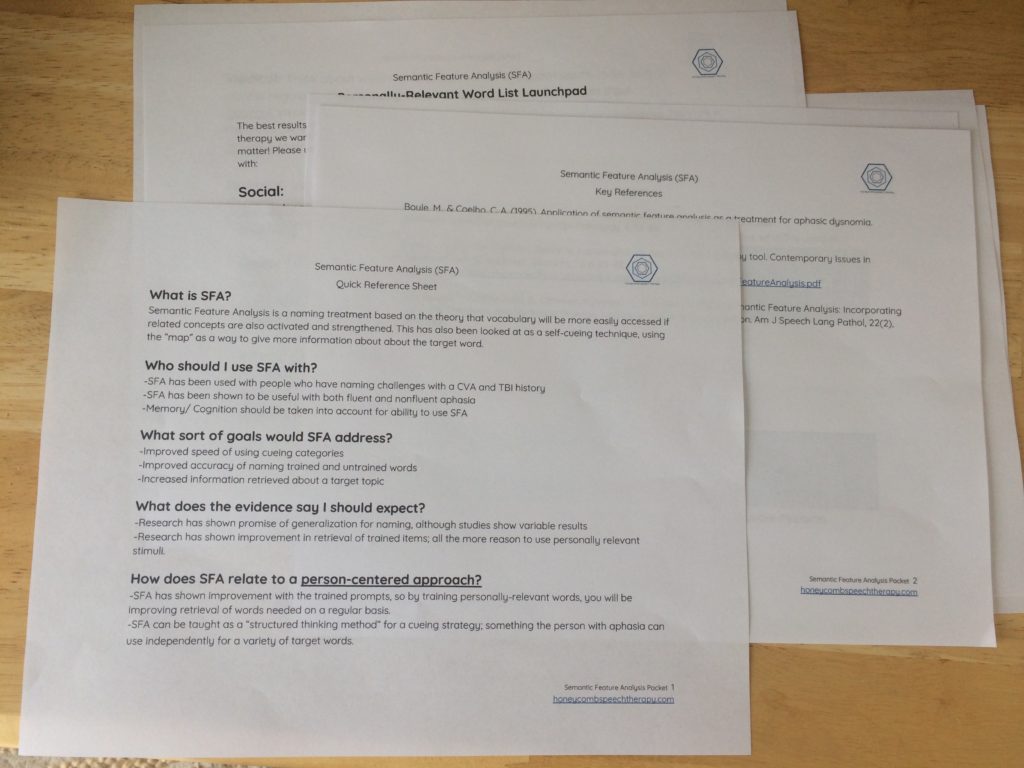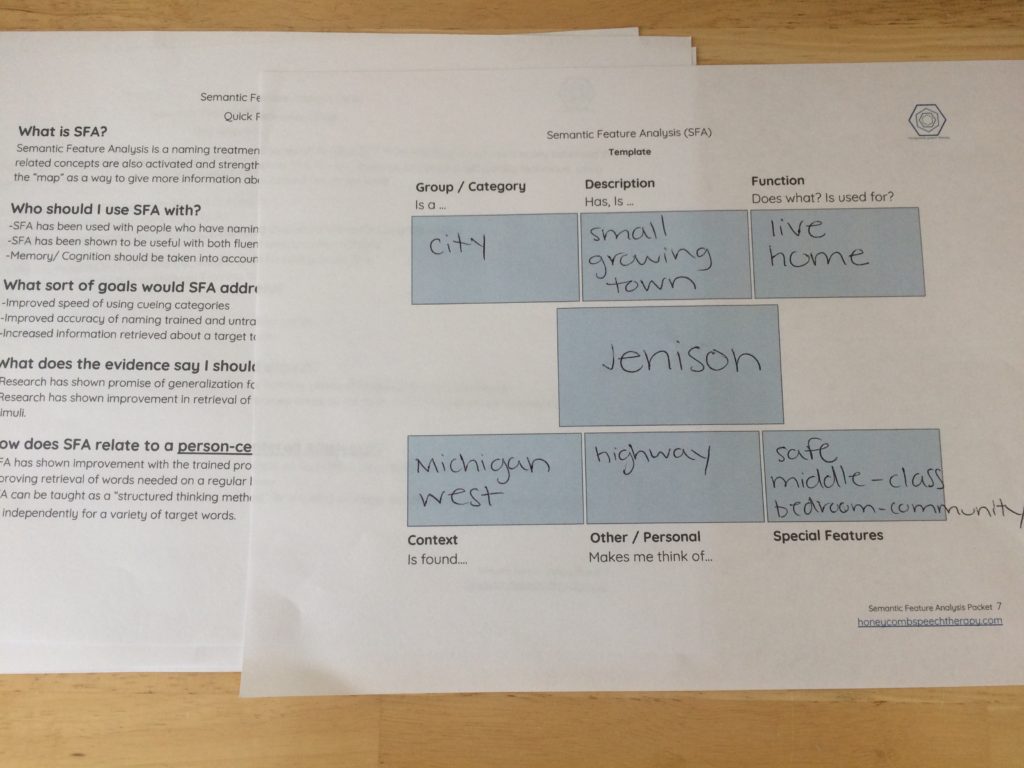If you are like me, you are busy treating patients during the day and can’t absorb a treatment protocol / prep materials / figure out who to use it with / figure out how to word things in documentation… all on your lunch break.
Here’s where the One Click series comes in: This series highlights various treatment protocols that are evidence-based, and I will provide everything you need to implement the therapy in just One Click (or 1 download!). They include a person-centered section to explain how you can use the materials in a person-centered way. So far, VNeST, CART, and RET, and Script Training have been covered.
Today we are talking about Semantic Feature Analysis–and not just regular SFA, but how (and why!) to use Personally-Relevant words as your stimuli!
*Information summarized from my own review of research. Please feel free to read the key resources listed below for your own information.
What is SFA?
Semantic Feature Analysis is a naming treatment based on the theory that vocabulary will be more easily accessed if related concepts are also activated and strengthened. This has also been looked at as a self-cueing technique, using the “map” as a way to give more information about about the target word.
Who should I use SFA with?
-SFA has been used with people who have naming challenges with a CVA and TBI history
-SFA has been shown to be useful with both fluent and nonfluent aphasia
-Memory/ Cognition should be taken into account for ability to use SFA
What sort of goals would SFA address?
-Improved speed of using cueing categories
-Improved accuracy of naming trained and untrained words
-Increased information retrieved about a target topic
What does the evidence say I should expect?
-Research has shown promise of generalization for naming, although studies show variable results
-Research has shown improvement in retrieval of trained items; all the more reason to use personally relevant stimuli.
How does SFA relate to a person-centered approach?
-SFA has shown improvement with the trained prompts, so by training personally-relevant words, you will be improving retrieval of words needed on a regular basis.
-SFA can be taught as a “structured thinking method” for a cueing strategy; something the person with aphasia can use independently for a variety of target words.

What do I need to start using Semantic Feature Analysis with Personally-Relevant Words tomorrow?
Click Here To Download the Semantic Feature Analysis Packet!
This 10-page download will allow you to use SFA tomorrow, with no further prep. You will find the protocol cheat sheet, an in-session therapy form, template for SFA, documentation sample, and most importantly: 100 samples and a launchpad for creating personally-relevant words!
